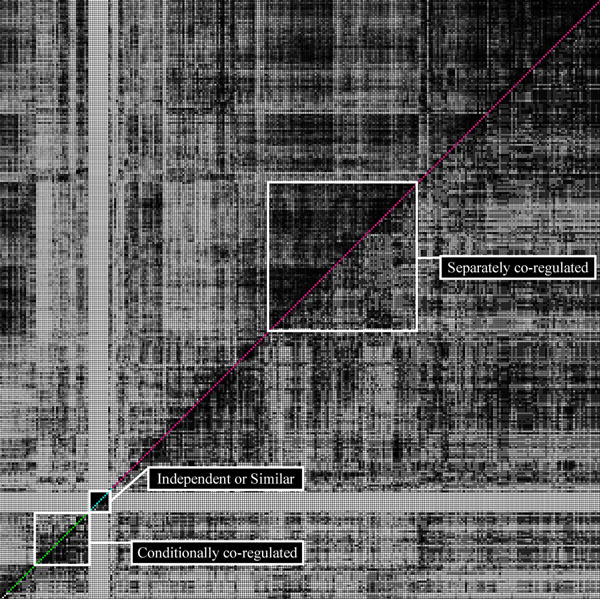Figure 4.
Inter-module relations of 300 modules. Inter-module relations of 300 modules: the coordinate (i, j) in lower diagonal where i >j (1 ≤ i, j ≤ 300) represents the gene overlap (Xg) between mi and mj . On the other hand, the upper diagonal coordinate where i <j represents the sample overlap (Xs). The gray-scale indicates the degree of overlap; the darker the higher overlap. Each square groups the modules which belong to the same type of inter-module relations; independent, conditionally co-regulated, separately co-regulated, and similar. The modules in the square tagged independent or similar are characterized as ‘externally exclusive’ to other (outside) modules but ‘internally similar’ with the modules grouped together. Both aspects of independent and similar are represented as darker gray-values within the square but lighter ones outside the square. It implies the genes are tightly associated only with specific samples (experimental conditions).

